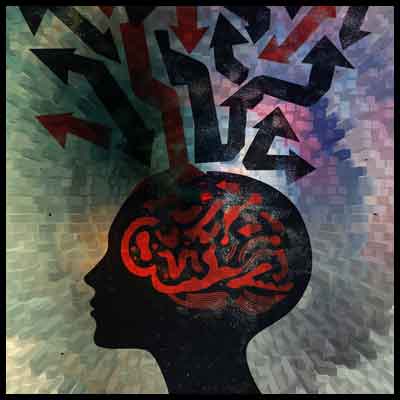Will connectomics and machine intelligence map the brain?
Jan. 24, 2023.
3 mins. read.
13 Interactions
We’ve all seen a microscopic image of neurons in the brain. But this image is misleading: Neurons don’t exist in isolation in the human brain. Some 86 billion neurons form 100 trillion connections to each other.
To make sense of these connections, Wei-Chung Allen Lee, Harvard Medical School associate professor of neurology at Boston Children’s Hospital, is working in a field of neuroscience called connectomics, which aims to comprehensively map connections between neurons in the brain. It’s a convergence of neurobiology, engineering, computing power and artificial intelligence.
“The brain is structured so that each neuron is connected to thousands of other neurons, and so to understand what a single neuron is doing, ideally you study it within the context of the rest of the neural network,” says Lee.
A map of the brain
To do that, Lee and associates are trying to couple connectomics with recordings of neural activity to do what they call “functional connectomics.” “Essentially, we take the map of where every neuron is and how it is connected to every other neuron, and we layer on information about the activity of those neurons in a living animal.
”We are also using genetic engineering approaches to label specific cell types, which is additional information that we can layer on top of connectivity.”
What do you see when you turn out the light (and fall asleep)?
“Some have argued that you are your connectome. When you fall asleep at night, your brain activity dramatically changes, interrupting your thoughts and feelings — but when you wake up, you resume your thoughts and feelings without any break in your sense of self.
”This is likely because your brain connectivity has remained largely intact through the night. In essence, the structure of how our neurons are wired is our ‘self,’ and connectomics is the key to understanding this structure.”
Machine learning meets connectomics
The researchers are developing and applying high-throughput microscopy, computational approaches, and machine learning to generate connectomes and translate these detailed maps of neural connectivity into biological and computational insights.
”We have mainly worked with mice and fruit flies, which are powerful and well-studied model systems,” said Lee. “The field has sophisticated genetic tools that allow us to label different populations of neurons across the central nervous systems of these species. In fruit flies, we can use the technologies we’ve been developing for connectomics to capture the entire brain and nervous system at synapse resolution.”
“In the mouse, we can target relevant neural circuits or subcircuits.” The researchers are using these models to study the basic principles of how neural circuits are built and operate — basically how the brain’s neural networks are connected to each other to perform different computations that underlie behavior.”
One key component of their approach is serial transmission electron microscopy, or EM, which has unsurpassed spatial resolution, signal-to-noise ratio, and speed relative to other serial EM methods. This technique allows them to identify excitatory and inhibitory neurons, as well as the synapses, or small gaps where neurons connect to each other. They can also examine connectivity patterns of neurons, and study the organization of synaptic connections.
Reference: Nguyen, T.M., Thomas, L.A., Rhoades, J.L. et al. Structured cerebellar connectivity supports resilient pattern separation. Nature 613, 543–549 (2023). https://doi.org/10.1038/s41586-022-05471-w
Let us know your thoughts! Sign up for a Mindplex account now, join our Telegram, or follow us on Twitter.


.png)

.png)


.png)








1 Comments
One thought on “Will connectomics and machine intelligence map the brain?”
🟨 😴 😡 ❌ 🤮 💩